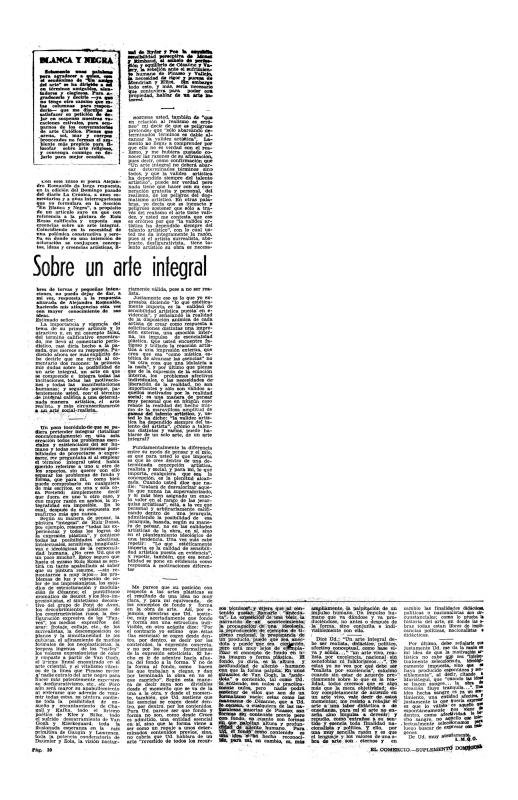This article by Alejandro Romualdo Valle argues there is a difference between “the universal” and “the cosmopolitan” in art using Pablo Picasso’s Guernica (1936-37) as an example.
During the 1950s, Peruvian poet, draftsman and journalist Alejandro Romualdo Valle (1926-2008) was one of the principal detractors of abstract art in his country. In June 1951, he participated in the first local debate on this trend. [See in the ICAA digital archive this text by Valle, “Gran problems del arte peruano es la falta de críticos: “Xanno” (doc. no. 1150928).] His stance on art criticism at that time was contrary to any ideological bias: but this point of view, and his own poetry, were oriented toward a leftist militancy that developed during his time in Europe, between 1952 and 1953, when he studied literature in Madrid. Upon his return to Lima, his art criticism —published in La Crónica newspaper—would stand out for its causticity against abstract art, which was then being debated within the local art scene. At the start of 1955, Valle debated the principal ideologue of modernism in Peru, architect Luis Miró Quesada Garland (1914-94), regarding the triumph of social realist painter Alfredo Ruiz Rosas (1926-2002) at the Salón Moncloa [see“En blanca y negra...” (doc. no. 859826); “Sobre un arte integral” (doc. no. 859917), both by Garland]. That same year, in connection with the Primer Salón Annual de Pintura Peruana, Valle evaluated the “young” pictorial orientations in the country that, in his understanding, confirmed the victory of a renascent figuration. [See in the ICAA digital archive[“¿Hacia dónde va la pintura en el Perú?: Primer Salón de Pintura”, by Valle (doc. no. 1138900)]. Within a context that refuted his predictions about the end of the 1950s, Valle was consistent in his defense of “committed art” through various articles published in magazines circulating in the Peruvian capital.




